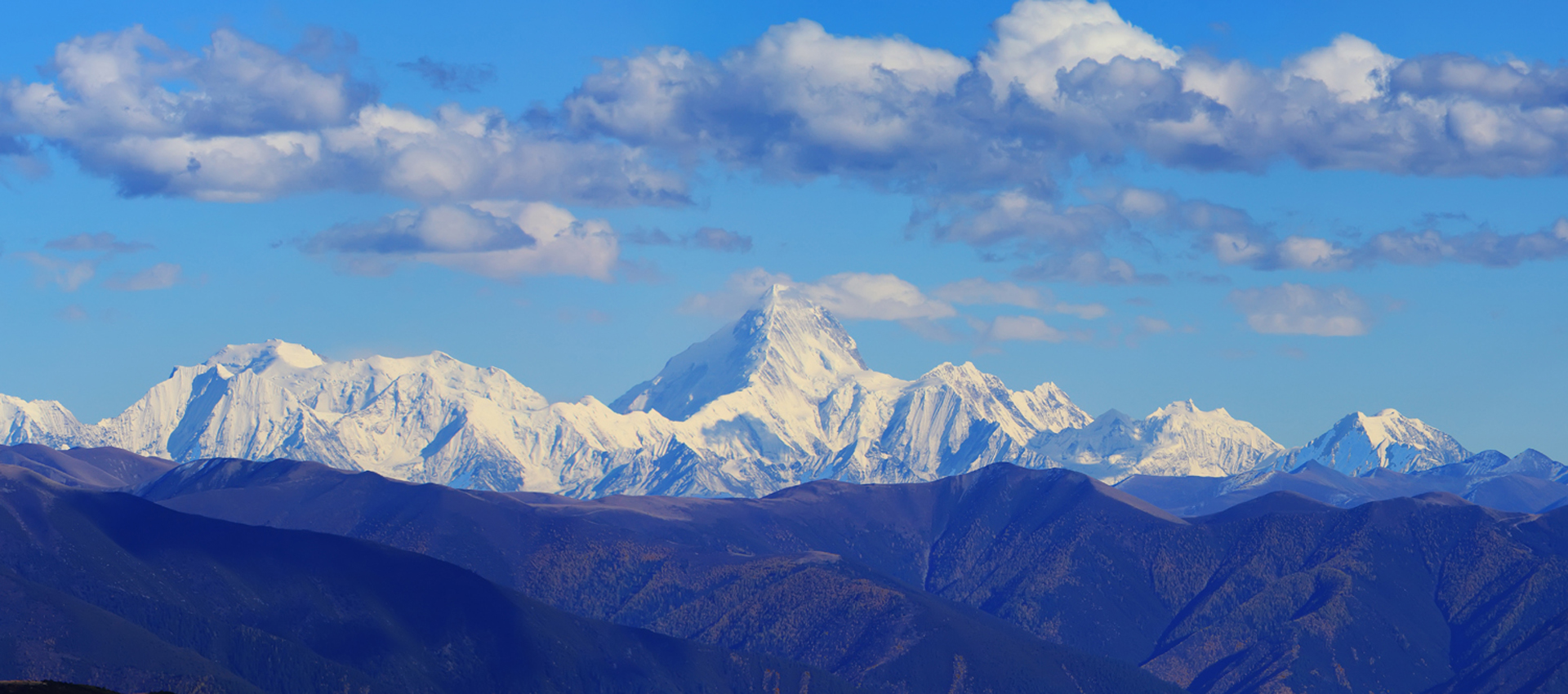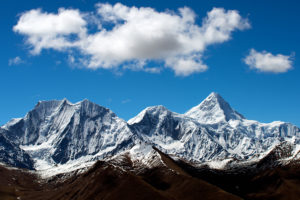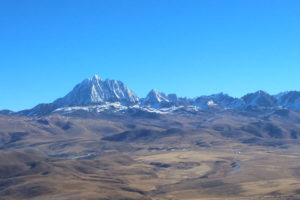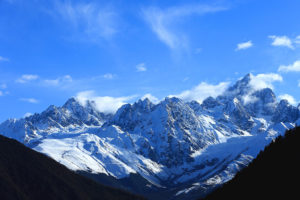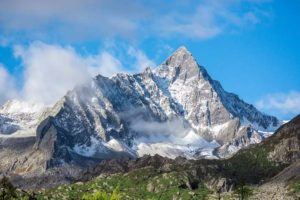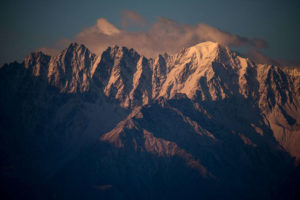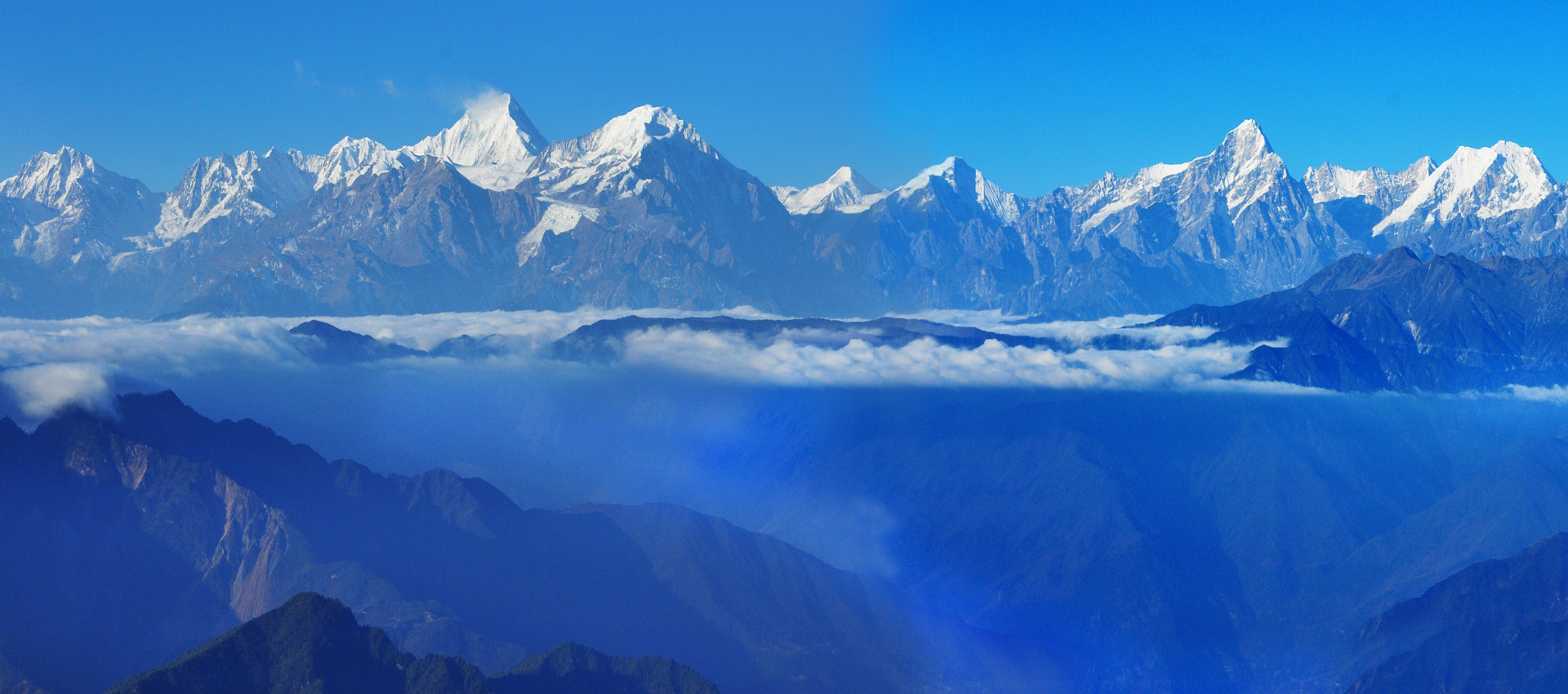
Introduction
Daxue Shan Range is called Daxueshan in Chinese, meaning Great Snow Mountains. It is a north-south direction range runs 400km in western Sichuan Province. It is a complicated range of several smaller rangers including Minya Konka Range, Zheduo Range, Mount Dangling, Mount Yala, etc. with the highest peak Mount Gongga that is 7556m. Daxue Range is part of the Hengduan Mountains which is on Eastern Tibetan Plateau. Daxue Range is considered the separation line of traditional China and Tibet. West of Daxue Range is Tibetan Plateau and east of Daxue Range is Sichuan Basin. The south of Daxue Range connects to Daxiangling and Xiaoxiangling ranges near Xichang on Yungui Plateau. The range splits Yalong River and Dadu River, which are two main tributaries of Yangtze River. Mountains of this range are normally consisted of granite and sand slate. The range is located about 300km west to Chengdu. In Daxue Range, many peaks have been climbed yet a great number of them have not been explored yet.

Daxueshan Range is a watershed between the Dadu River and the Yalong River of Sichuan, an important geographical boundary in the west of Sichuan Province. Located in the Ganzi Tibetan Autonomous Prefecture, it runs north-south. From north to south, there are Xiaqiangla (Dangling Mountain), Yala Mountains, Lotus Mountains, Zheduo Mountains, Minya Konka Range (Gongga Mountains), Renzong Mountains and Tseyinga Mountains (Wuxuhai).
Daxueshan Range is home to some mountains that were attempted before by climbers and explorers. There are over a dozen mountains here are over 6000 meters and many over 5000 meters. Some mountains in Daxueshan Range still remain unclimbed.
The other sub-ranges, Niushan Mountain, extend into the Liangshan Yi Autonomous Prefecture to the south. Daxueshan Range extends more than 400 kilometers from north to south. Daxueshan Range is one of the main mountain ranges of the Hengduan Mountain Range, which is generally the eastern part of Tibetan Plateau.
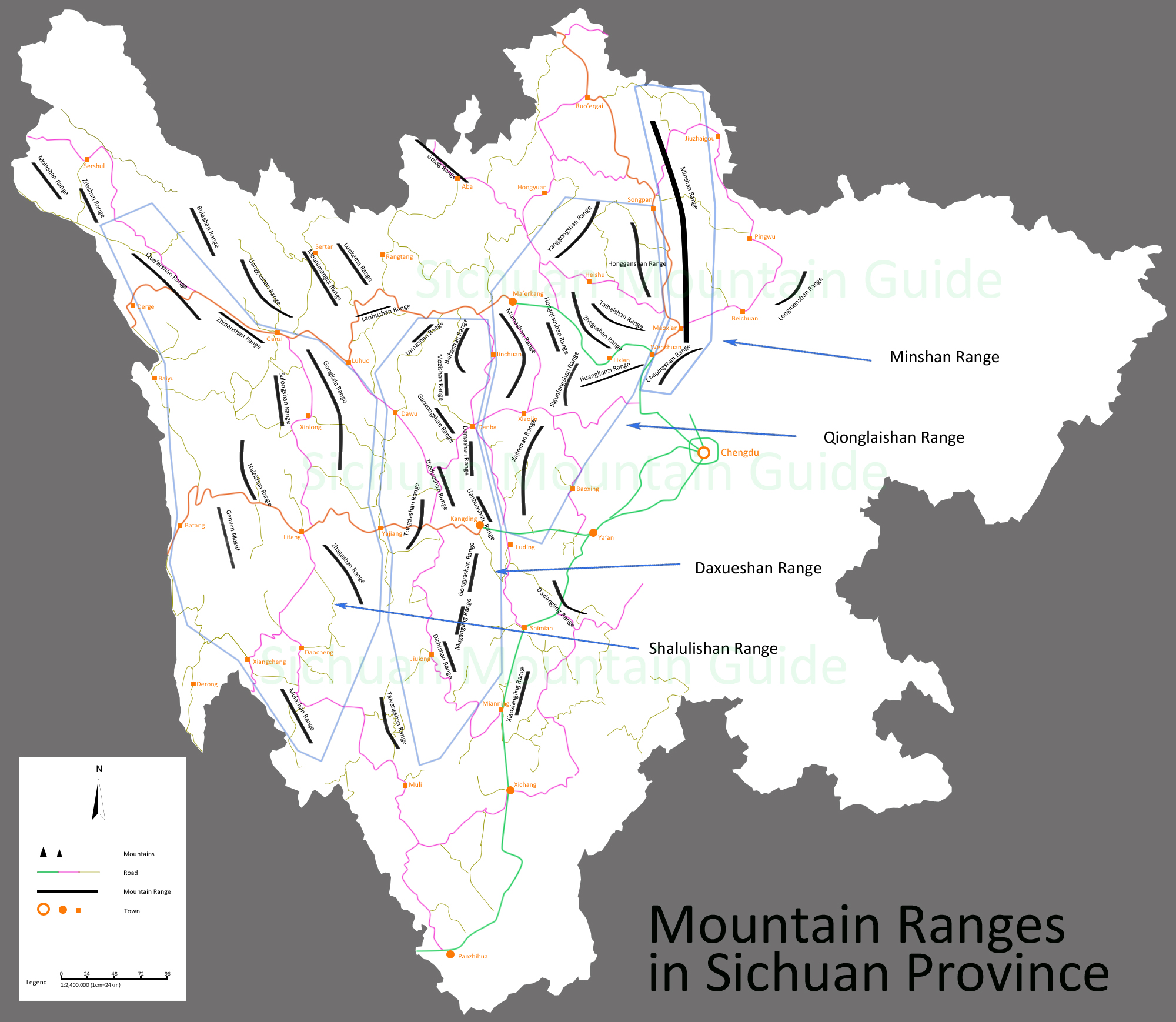
The mountains are mainly composed of sand slate and granite, with peaks usually more than 5000 meters.
The highest peak of Daxueshan Range is Mt. Gongga at 7556 meters above sea level. There are modern glaciers in the mountains above 5000 meters, and there are ancient glacial landforms. East side of Daxueshan Range is steep and west of it is gentle. Elevation is high in the west and low in the east. The wide plateau area on the west slope has a cold climate, mainly dominated by animal husbandry. The east side are deep-cut alpine valleys with a distinct vertical distribution of climate, which is an interlaced area of agriculture, forestry, and animal husbandry. Daxueshan Range is an important forest area in Sichuan. There are many types of minerals found here too. The western part of the Daxueshan Range is Tibetan area, and the eastern part of it is a Han and Tibetan mixed area.
Mt Gongga (Minya Konka Range) is the highest peak of Daxueshan Range. It is located on the eastern edge of the Qinghai-Tibet Plateau, in the middle of the Daxueshan Range in the Hengduan Mountain Range. between the Dadu River and the Yalong River. “Gongga Mountain”, which means “Giant White Mountain” in Tibetan, is situated in a range under the same name: Minya Konka Range, about 60 kilometers long from north to south and 30 kilometers wide from east to west.
How to Get There
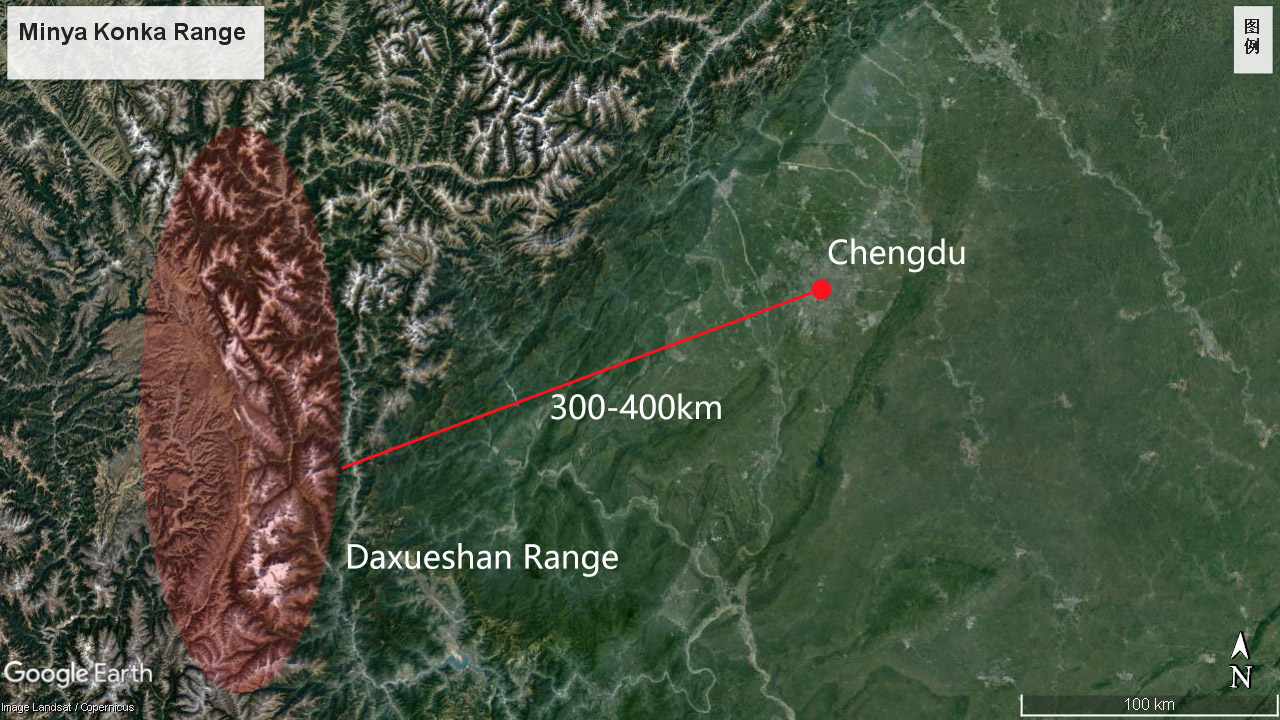
There are a few towns in Daxue Range which are usually used for climbers. Kangding, Moxi, Danba, Shimian, etc. One needs to drive for at least 1 day to get to Daxue Shan Range. The farthest place may need 2-3 days for example to get to its western face.
Mountains and Mountain Groups
Within Daxue Range there are Minya Konka mountains, Zheduo Range, Mount Yala, Mount Dangling (Xiaqiangla), Mt. Mugangling (Mount Renzhong), Mt. Lotus and Mt. Ze’er. The highest mountain of Daxue Shan Range is Mount Gongga, which is 7556 meters above sea level. Daxue Shan has the tallest mountains in Sichuan Province. Most of the 6000 meter’s mountains are within this range. Mount Yala is 5820-meter high. Mount Xiaqiangla is 5470-meter high. Mount Lotus is 5702 meters high. There are many unclimbed mountains in Daxue Shan Range in Sichuan.
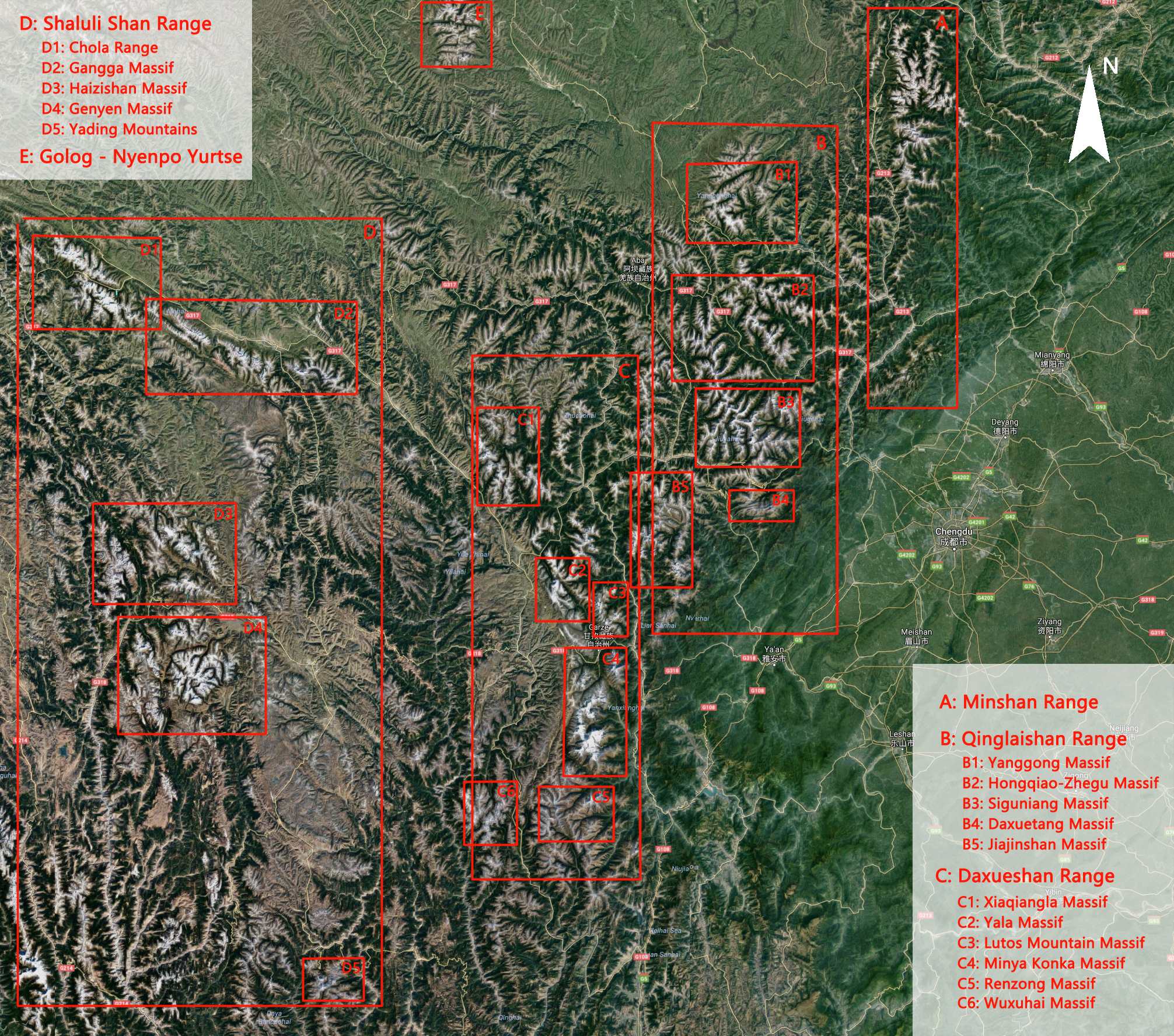
Daxueshan Range includes several smaller massifs and ranges of mountains where sit manyy very beautiful peaks and stunning walls/ridgelines. From north to south they are Xiaqiangla, Yala Mountains, Lotus Mountains, Minya Konka Range, Renzong Mountains and Tseyinga Mountains.
Minya Konka Range is home to over a dozen 6000+ peaks and the eastern most 7000+ meter Mount Gongga (Gongga Shan). Among the mountains of Minya Konka Range, there is Mount Edger (6618m), Jiazi Feng (6549m), Daduomanyin (6380m), Grosvnor (6376m), Leduomanyin (6112m), Langgemanyin (6074m), Little Konka (5928m), etc. Most of the mountains in this range have been climbed and summated since last century but it’s still a very remote and unexplored place.
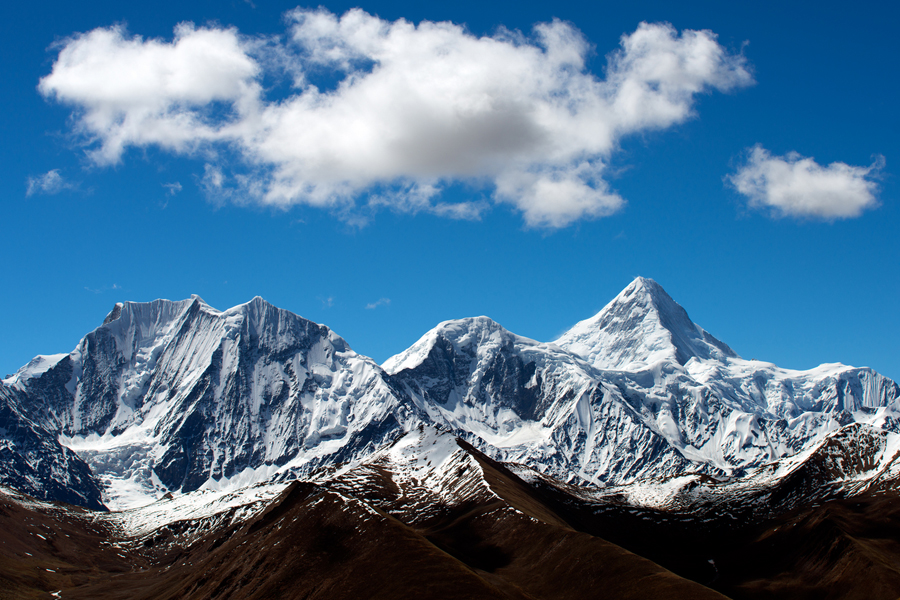
Yala Mountains are a cluster of smaller mountains in Daxueshan Range at the north of Kangding and north of Minya Konka Range where the highest mountain is at 5885 meters. The main peak in this cluster is named Mt. Yala and it has been attempted several times with few successful summit. The rest of the other peaks are unclimbed and unexplored.

Xiaqiangla Massif is the north end of Daxue Mountain Range. It has a couple of less explored mountains that are technical and over 5500 meters.
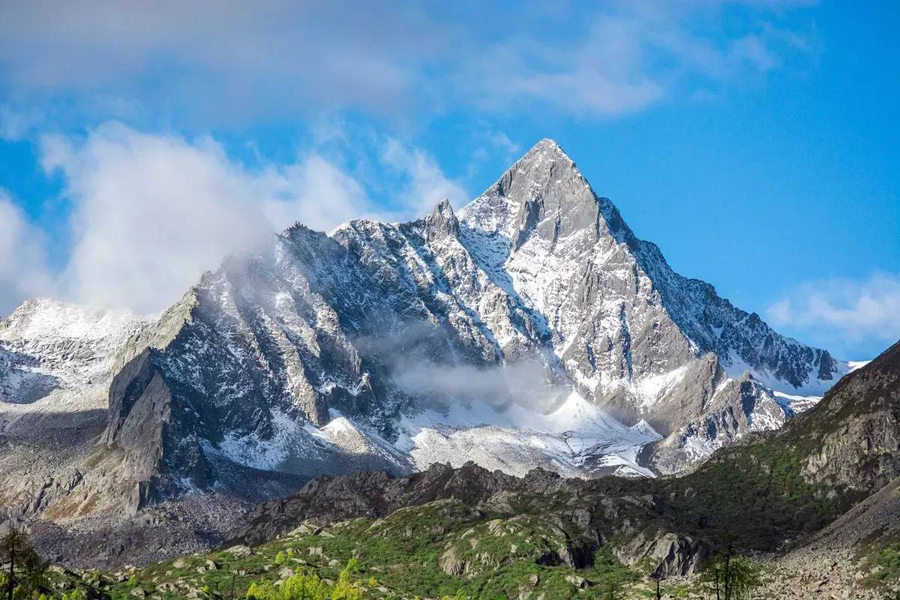
Lotus Mountains are another cluster of mountains also north to the Minya Konka Range and home to unexplored mountains that are over 5000 meters.
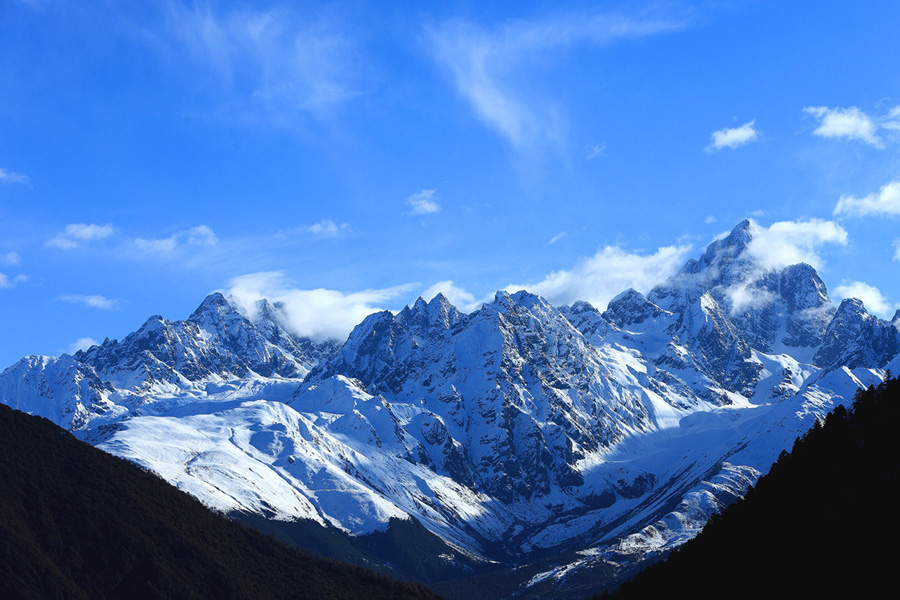
Climbing Season
South China has a warm and wet summer usually. This range is within the subtropical and temperate mountain climate zone. Monsoon season is from May to October every year. Rains are mainly from June to September but can vary each year. Tree line is at around 4000 meters. East of Daxue Range is wetter and west of the range is drier.
The climbing season in Daxueshan Range is in between summer and winter, mainly from late September to November or later, and from April to May.
The area has a temperate plateau climate, and the climate changes greatly. The rainy season is from June to October each year, and the dry season is from November to May the following year. The annual rainfall is 800-900 mm, mostly come in July, August, and September. In summer, the amount of cloud is large, and the temperature difference is also large. Sometimes the temperature can reach -20 ° C or lower above 5000 meters above sea level in winter. The weather in the dry season is sunny and milder than in other areas of the same latitude. The highest temperature in a year is April and May. Most mountaineering activities are conducted between dry and rainy seasons.
Daxueshan Range has a wide range of terrain, and it is located in 7 climatic zones from the bottom to the top: subtropical zone, warm temperate zone, cold temperate zone, sub-frigid zone, cold zone, cold zone, and snow zone. The specific geographical environment and special climate conditions form a multi-layered Plant belts and unique natural landscapes. Peaks above 5,000 meters above sea level are covered with snow all year round; low-altitude, uninhabited slopes are densely covered with lush and pristine forests. The forest is less affected by human activities and the vegetation is intact. There are more than 400 species of wild animals inhabiting here, and 28 species of rare and protected animals.
The essential places to be planned for trips to Daxueshan Range include Kangding, Caoke, Moxi to Minya Konka and Danba, Dawu to Xiaqiangla and Yala.

